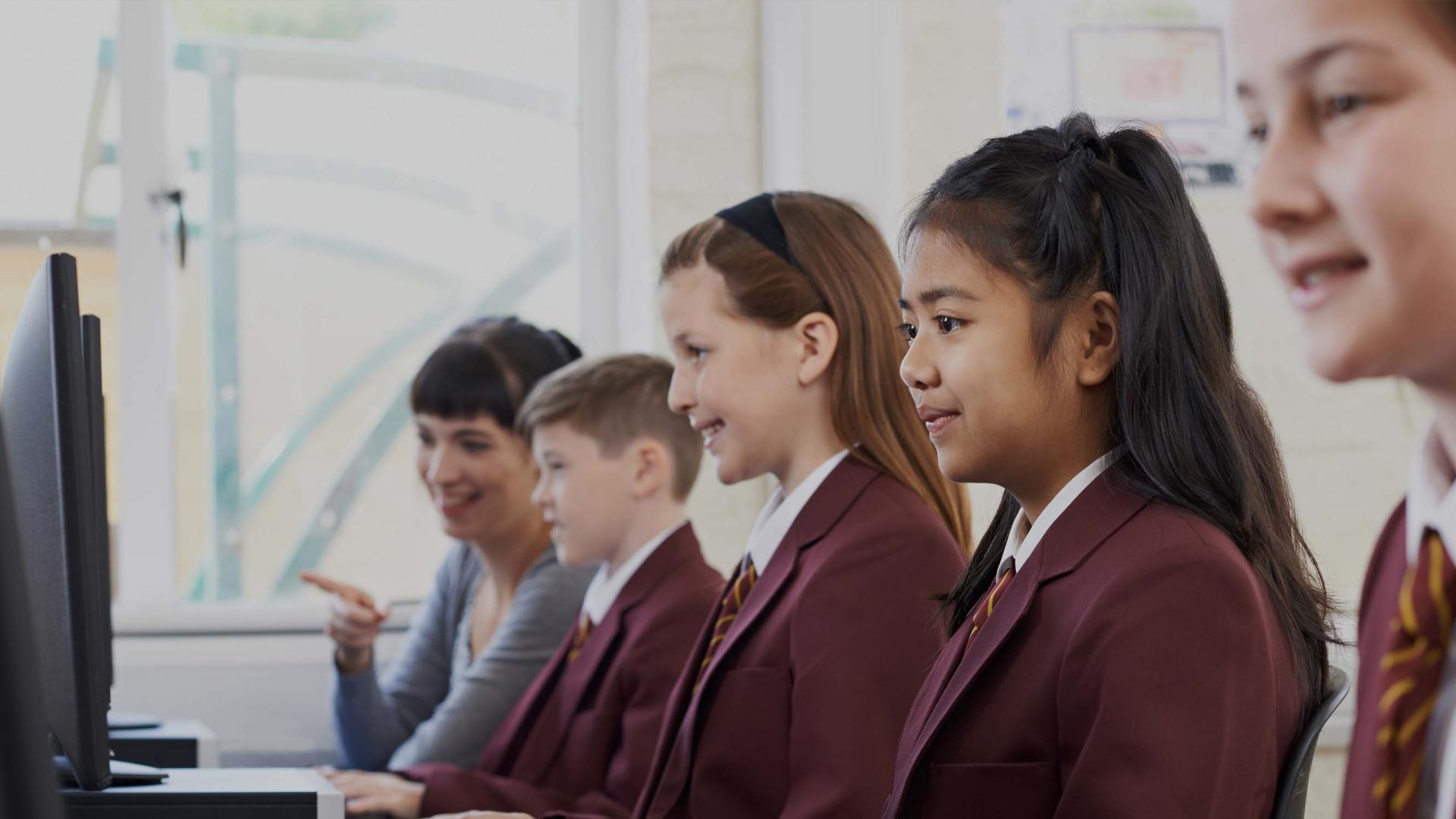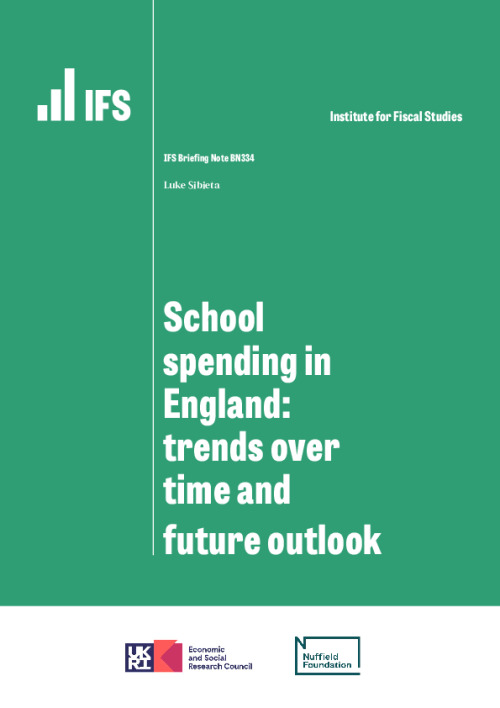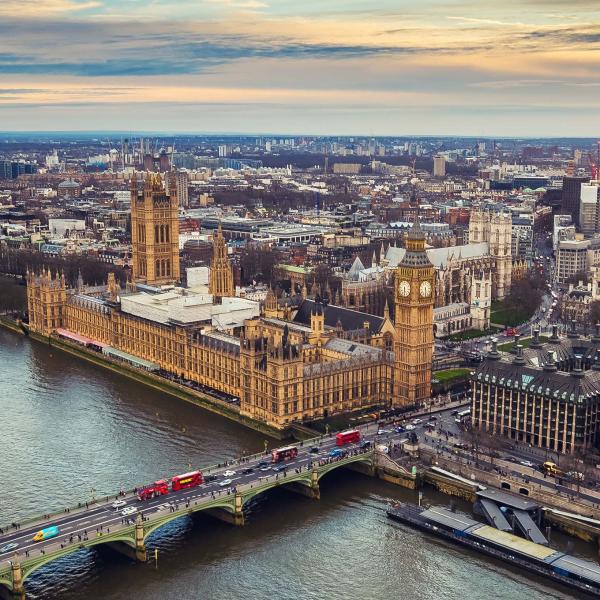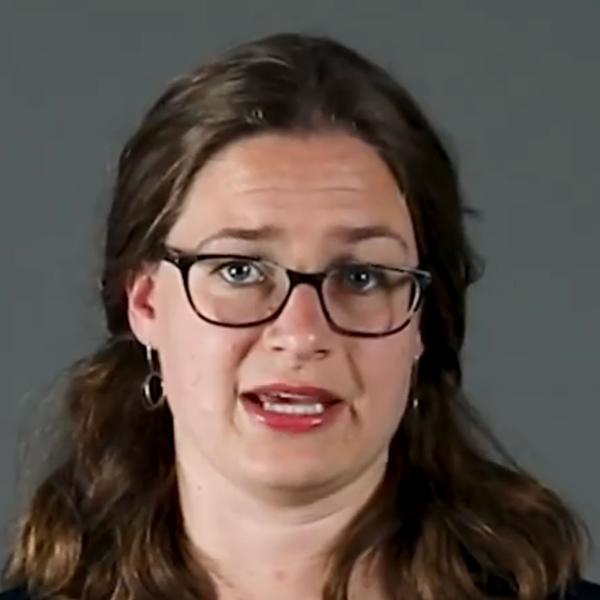Following large increases over the 2000s, school spending per pupil in England fell in real terms from about 2010 onwards. The present government sought to reverse this picture in 2019 by providing a three-year settlement for school spending increases up to 2022–23. This briefing note provides an update on school spending trends over time, covering the most recent sets of data, forecasts and policy announcements. School spending covers pupils in state-funded schools aged 5–16, as well as pupils aged 16–19 in school sixth forms. Where necessary, we also include pupils aged 3–4 in early years settings.
Section 1 begins by examining trends in total school spending per pupil over time, including spending by local authorities. This allows us to show how spending per pupil has changed in recent years, likely future trends, and how a consideration of the specific cost pressures faced by schools changes this picture. In Section 2, we look at spending by primary and secondary schools (excluding spending by local authorities) over the long run back to the 1970s. Given the government’s focus on levelling up poorer parts of the country, Section 3 examines trends by levels of deprivation and the role of the National Funding Formula for schools. This illustrates that more deprived schools have seen and will continue to see larger cuts in funding, running counter to the levelling-up agenda. Finally, Section 4 discusses the overall pressures on school spending in the future, including pressures on teacher pay and the likely long-lasting effects of the pandemic.
Key findings
- School spending per pupil in England fell by 9% in real terms between 2009–10 and 2019–20, the largest cut in over 40 years.
- The government has allocated an extra £7.1 billion for schools in England through to 2022–23. Whilst this will increase spending per pupil by over 8%, school spending per pupil in 2022–23 will still be 1–2% lower in real terms than in 2009–10.
- Over the long run, spending per pupil has gone up faster in primary schools than in secondary schools. In the late 1980s, secondary school spending per pupil was over 60% higher than spending in primary schools. In 2019–20, the difference was only 14%.
- Deprived schools have seen larger cuts. The most deprived secondary schools saw a 14% real-terms fall in spending per pupil between 2009–10 and 2019–20, compared with a 9% drop for the least deprived schools. The National Funding Formula has continued this pattern by providing bigger real-terms increases for the least deprived schools (8–9%) than for the most deprived ones (5%) between 2017–18 and 2022–23. This runs counter to the government’s goal of levelling up poor areas.
- Delivering a (delayed) manifesto commitment to increase teacher starting salaries to £30,000 will require a 17% cash-terms rise in starting salaries over 2022 and 2023. With salaries for more experienced teachers 8% lower in real terms than in 2007, there will also be pressure to increase other teacher salaries to avoid serious recruitment and retention problems.
- Missed face-to-face schooling during the pandemic is likely to have long-lasting effects on children’s education. So far, the government has only provided about £3 billion of the £15 billion reportedly recommended by the Education Recovery Commissioner for catch-up.











